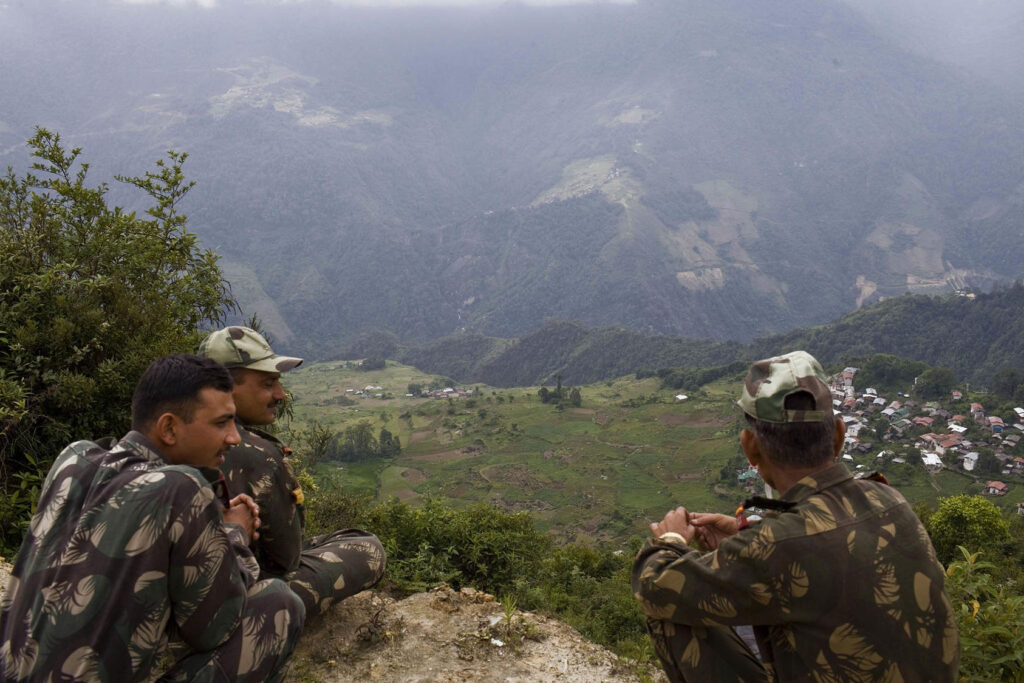Calvert Nazareth

The United States Senate passed a bipartisan Resolution in February, 2023, condemning Chinese aggression in the Indian territory of Arunachal Pradesh. The South and Southeast Asian border conflicts have depleted the national resources and raised safety concerns. The violent colonial histories are reflected in their territorial disputes. The colonial establishment repercussions of frontiers separating long-standing regions caused ongoing problems. The drawing of an ill-defined border between India and China, has devastated both nuclear giants, and its repercussions are felt in various areas such as policies, GDP, and trade. Most South and Southeast Asian countries are economically disadvantaged and have been plundered of their culture and politics by their colonisers. Hence, they tend to harbour strong nationalist feelings. Power politics impede peaceful conflict resolution. Even in a globalized world, a power imbalance prevents colonial misery from ending. After World War II [“WWII”], the USA and the USSR emerged as superpowers, asserting their authority in international forums while neglecting other countries’ concerns. These hegemonic powers were neo-imperialistic. The Third World Approach to International Law [“TWAIL”] was created in reaction to Western supremacy. It challenges hegemony and supports third-world integration. The article analyzes border conflicts in south and southeast Asia [“Part I”] and examines solutions from a TWAIL viewpoint [“Part II”].
Part I
Factors that have contributed to the escalation of boundary disputes include colonialism and its bitter remains, capitalism v. communism, and nationalistic internal policies. Colonisation underpins boundary disputes, as the colonisers drew illogical boundaries far from ground reality. Britishers and other colonists brought new ideas of territory into their colonies. They defined boundaries for control, transport, and profit without considering sociocultural, linguistic, religious, or ethnic factors. Consider the British colonial expediency which has led to unreasonable and baseless borders (such as the border between India and China, Pakistan or Bangladesh). For example, the Shimla Convention, 1914 delineated the McMahon Line among India, China and Tibet. However, China was not made party to this Convention.
In territorial conflicts, the South and Southeast Asian nations have typically used historical evidence from before their colonisation. The People’s Republic of China bases its South China Sea claims on historical maps, and maritime geobody evidence.
The Colonial powers have vociferously blamed diplomatic obstacles for border disputes. For instance, the Association of South East Asian Nations [“ASEAN”] was heavily criticized, after the Thai-Cambodian border tussles in 2011. But, even international organizations like the United Nations [“UN”] have failed to settle border disputes. Take the popular example of China outrightly rejecting the order of the Permanent Court of Arbitration in its South China Sea ruling. Given how the Asian social and political fabric is so starkly different from the West, solutions to these disputes must consider these varying factors.
Part II
TWAIL is an intellectual and political movement that challenges Western hegemony and deconstructs its approach towards international law. It is based on the recognition that international legal scholarship requires democratisation in at least two ways: first, “we must contest international law’s favouring of European and North American voices by providing institutional and innovative opportunities for participation from the third world”; and second, “we must formulate a substantive critique of the politics and scholarship of mainstream international law to the greatest extent possible.”
TWAIL as a solution to border disputes in Asia:
- TWAIL Promotes Multilateralism
Border disputes are a product of their colonial past, and the solution provided by modern instruments are an extension of the same. The UN is centered around the principle of multilateralism. If the principle is followed, TWAIL would become irrelevant. If multilateralism is consistently practiced within the UN, countries would collaboratively address global issues, fostering inclusive decision-making that respects all nations. This could mitigate some of TWAIL’s concerns about unequal treatment in international law, aligning with its goals. However, eradicating biases is challenging due to history, economics, and politics. While multilateralism helps address issues, TWAIL’s critical perspective remains relevant for scrutinizing and improving multilateral practices.
However, realists argue that the current international system strengthens the notions of imperialism and hegemony. According to Criddle, “When the border between two states lacks clear definition, neither state is entitled to impose its preferred solution on the other unilaterally.” The International Court of Justice in Gulf of Maine observed that all states are entitled to participate in marine delimitation decisions that impact their legal rights. Hence, multilateralism is a “fundamental rule” of international marine law.
One of the key proponents of TWAIL, B.S. Chimni elucidated that multilateralism is an appropriate response to hegemony and international organisations must take positive steps towards integrating third-world countries.
The more significant danger to mankind is disguised colonialism, which takes advantage of the legitimacy of international organisations. The TWAIL approach questions the functioning of a biased international system, but it does not call for its dissolution or establishing an anarchical system. This is so because there is a realisation to protect and safeguard the national interests. The third-world nations merely seek openness and transparency in the international system. To be a global multilateral organisation, the UN must serve the minority, not the majority. Hence, the UN must include third-world countries’ participation in decision-making and dispute resolution to fulfill the multilateralism objective.
Integration of third-world countries would offer them access to the global markets, and societies of other states. Hence, nations must work towards a common or shared interest to aid the process of openness. Naturally, States will prefer to develop influence inside an open system that works towards a shared interest and promotes multilateralism.
- Regional Cooperation
In the era of globalisation, the borders are becoming more and more porous. Hyperglobalists are optimistic that we are progressing towards a borderless world. Unfortunately, a more realistic approach must be taken to address the existing border disputes. A solution to the same is regional cooperation. Regional cooperation between disputed counties offers nations the opportunity to raise their concerns and amicably solve the conflict while protecting their respective interests. One way of settling disputes is through a mutual agreement between the parties. On October 27, 1969, Indonesia and Malaysia signed their first border agreement, defining their continental shelf line between the Strait of Malacca and the Natuna Islands in the South China Sea. If the nations cannot conclusively solve their dispute, they can take recourse to regional organisations like the ASEAN. ASEAN believes that a consensus approach is the key conflict management strategy. It aims to sustain peaceful relations between ASEAN member nations by preventing, defusing, and regulating situations that might develop into full-scale interstate conflict.
South Asian Association for Regional Cooperation [“SAARC”], on the other hand, has proved to be very ineffective in settling border disputes. This is due to the tensions between India and Pakistan and the inability to reach a common ground. Both countries attempt to assert their dominance and power, which has prevented them from arriving at any solution. TWAIL is opposed to power politics. Hence, nations need to find common ground for the greater good. India, a significantly large country in terms of geography and economy, may consider initiating the attempt to find common ground. This would catalyse a paradigm shift and encourage other nations to do the same.
Conclusion
Border disputes result from power politics and the need to assert dominance. To solve territorial disputes, nations must set aside their political agenda and work towards a common goal. Hence, increased multilateralism and regional cooperation can catalyse the South and Southeast Asian border dispute settlement process. These principles are in consonance with the objectives of TWAIL and, if followed appropriately, can yield results, one that is of peace and harmony.
Calvert Nazareth, 4th year, School of Law, CHRIST (Deemed to be University)
Chathurya Srinivasan, 4th year, National Law University, Jodhpur



